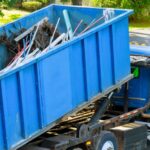Hoarding cleanup is more than just removing clutter; it's also about restoring safety, dignity, and peace of mind. At Trash Bandits, we understand how emotionally overwhelming hoarding situations can be, both for the individual and their loved ones. That’s why we approach every hoarding cleanup in Stonewall, LA, with empathy, professionalism, and respect. Whether you're seeking help for yourself or someone you care about, knowing what to expect can make this important process feel a little more manageable.
Below, we walk you through each phase of a professional hoarding cleanup, explain why it matters, and highlight how we support our clients every step of the way.
Step 1: Initial Assessment and Planning
The first phase of any hoarding cleanup starts with a comprehensive evaluation of the property. Here’s how we begin:
Conducting a Walkthrough
We perform a detailed walkthrough of the home or space to assess the extent of the hoarding. During this visit, we look for:
- Blocked exits or pathways
- Structural damage
- Mold, pests, or hazardous materials
- Fire hazards
- Accessibility concerns
Creating a Custom Cleanup Plan
Every situation is unique. After our assessment, we craft a personalized cleanup strategy tailored to the individual’s needs, preferences, and level of comfort. This plan outlines the scope of work, a realistic timeline, safety protocols, and whether additional support services (like pest control or repair work) will be needed.
Step 2: Building Trust and Communication
Successful hoarding cleanups begin with open communication and trust-building. We prioritize making our clients feel safe and respected.
Listening Without Judgment
We take the time to listen. Before any items are touched, we talk through concerns, personal goals, and what belongings are meaningful to the client. This helps us establish a shared sense of direction and cooperation.
Collaborating With Families and Support Systems
If family members, social workers, or therapists are involved, we work alongside them to ensure consistency and support. Clear communication keeps everyone on the same page and reduces anxiety throughout the process.
Step 3: Sorting and Decluttering
Once the plan is in place, we begin sorting through the items in a structured and thoughtful way.
Categorizing Belongings
- We sort items into the following categories:
- Keep – Sentimental or functional items the client wants to retain
- Donate – Items in good condition that can benefit local charities
- Recycle – Materials such as paper, cardboard, or certain plastics
- Discard – Items that are broken, expired, contaminated, or hazardous
Empowering the Client
Whenever possible, we involve the client in decision-making. This helps reduce feelings of loss or helplessness and fosters a greater sense of control over the process.
Step 4: Responsible Disposal and Donation
We handle the removal and disposal of all unwanted items in an environmentally responsible manner.
Eco-Friendly Practices: We recycle whenever we can and avoid landfills when alternative solutions are available.
Donations: Usable items are donated to local organizations, offering new life to old belongings and giving back to the community.
We do all the heavy lifting, so our clients don’t have to worry about how or where to dispose of items.

Step 5: Deep Cleaning and Sanitizing
After the clutter is removed, it’s time to restore cleanliness and safety to the home.
Thorough Cleaning
Our team performs a full deep clean of the space. We clean floors, walls, surfaces, and fixtures using industrial-strength cleaners and disinfectants.
Addressing Health Hazards
In hoarding situations, it's not uncommon to find mold, mildew, biohazards, or pest infestations. We use proper PPE and follow safety protocols to clean and sanitize every affected area.
Odor Control and Air Purification
We also take steps to eliminate lingering odors using air scrubbers, deodorizers, and HEPA filtration systems to improve air quality and comfort.
Step 6: Repairs and Restoration (If Needed)
In severe cases, hoarding can lead to property damage. We’ll help assess and coordinate basic repair work as part of the cleanup process.
- Replacing damaged drywall or flooring
- Fixing plumbing or electrical issues
- Repairing structural concerns
- Pest control and sealing entry points
Our goal is to help restore the space to a clean, livable condition; not just clean it out.
Step 7: Post-Cleanup Support and Maintenance
Our job doesn’t end once the clutter is gone. We care about our clients’ long-term success.
Ongoing Support
We can connect clients with mental health professionals, counselors, or support groups that specialize in hoarding disorder. Ongoing care is crucial for long-term recovery and relapse prevention.
Follow-Up Visits
We offer follow-up visits as needed to check in, offer encouragement, and help with minor touch-ups or organization.
Maintenance Plans
We’ll help create a realistic plan to keep the home organized moving forward, with daily, weekly, or monthly tasks based on the client’s lifestyle.
Why Choose Trash Bandits for Hoarding Cleanup in Stonewall, LA?
At Trash Bandits, we believe in doing more than just removing junk; we help people reclaim their space and their peace of mind. As a locally owned and operated team serving Stonewall and surrounding areas, we’re deeply committed to treating every client with dignity and care.
Here’s what sets us apart:
- Compassionate, discreet service tailored to your comfort level
- Experienced in navigating complex hoarding scenarios
- Eco-conscious disposal and donation practices
- Trained and insured professionals who handle every detail
- Flexible scheduling and custom cleanup plans
Whether you’re overwhelmed by the clutter or helping a loved one through a hoarding crisis, we’re here to make the process less stressful and more manageable.
Ready for a Fresh Start?
Hoarding cleanup can be a turning point, a fresh start after years of struggle. It’s not just about removing things; it’s about restoring comfort, safety, and control. If you or someone you know needs help in Stonewall, LA, we’re here to guide you with patience and compassion.
Contact us today to schedule a confidential consultation and learn more about our hoarding cleanup services. At Trash Bandits, we’re not just cleaning up — we’re also helping rebuild lives, one room at a time.
Read related article:



